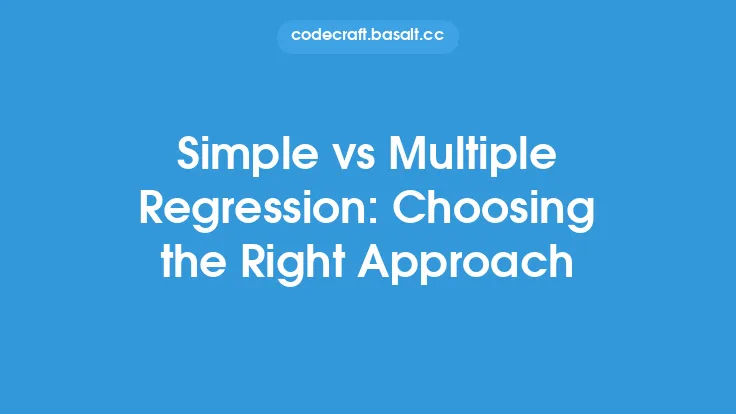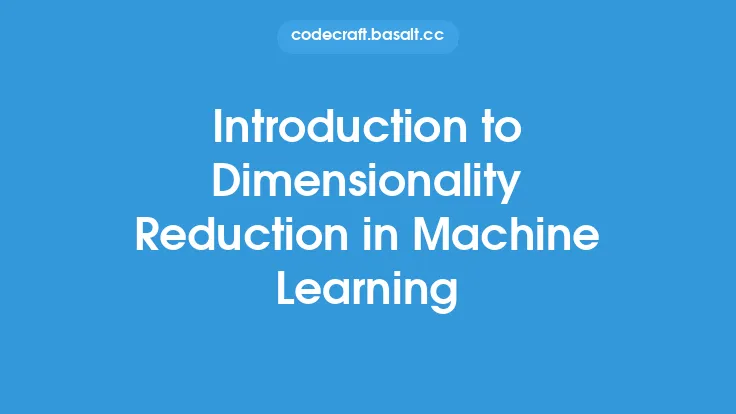When dealing with high-dimensional datasets, dimensionality reduction becomes a crucial step in the machine learning pipeline. The goal of dimensionality reduction is to transform the original high-dimensional data into a lower-dimensional representation while retaining most of the information. With numerous dimensionality reduction techniques available, choosing the right one for a specific dataset can be overwhelming. In this article, we will delve into the key considerations and factors that influence the selection of a suitable dimensionality reduction technique.
Understanding the Dataset
Before selecting a dimensionality reduction technique, it is essential to understand the characteristics of the dataset. The type of data, number of features, and relationships between features are critical factors to consider. For instance, if the dataset contains a large number of features with a significant amount of noise or redundancy, techniques like Principal Component Analysis (PCA) or Singular Value Decomposition (SVD) might be suitable. On the other hand, if the data has a complex, non-linear structure, techniques like t-Distributed Stochastic Neighbor Embedding (t-SNE) or Autoencoders might be more effective.
Evaluating the Purpose of Dimensionality Reduction
The purpose of dimensionality reduction is another critical factor to consider. Are you trying to improve model performance, reduce computational costs, or visualize high-dimensional data? Different techniques are optimized for different purposes. For example, PCA is often used for improving model performance and reducing overfitting, while t-SNE is primarily used for data visualization. Autoencoders, on the other hand, can be used for both purposes, as they can learn compact representations of the data and also be used for generative modeling.
Assessing the Computational Resources
The computational resources available are another important consideration when selecting a dimensionality reduction technique. Some techniques, like PCA and SVD, are relatively fast and efficient, while others, like t-SNE and Autoencoders, can be computationally expensive. The size of the dataset, the number of features, and the available computational resources should be taken into account when choosing a technique. For large datasets, techniques like Random Projection or Feature Selection might be more suitable due to their efficiency and scalability.
Considering the Preservation of Data Integrity
The preservation of data integrity is a critical aspect of dimensionality reduction. The goal is to retain most of the information in the original data while reducing the dimensionality. Techniques like PCA and SVD are designed to preserve the global structure of the data, while techniques like t-SNE and Autoencoders are designed to preserve the local structure. The choice of technique depends on the specific requirements of the problem and the characteristics of the data.
Comparing Linear and Non-Linear Techniques
Dimensionality reduction techniques can be broadly categorized into linear and non-linear techniques. Linear techniques, like PCA and SVD, assume a linear relationship between the features and are effective for datasets with a simple, linear structure. Non-linear techniques, like t-SNE and Autoencoders, can capture complex, non-linear relationships between features and are effective for datasets with a complex structure. The choice between linear and non-linear techniques depends on the characteristics of the data and the specific requirements of the problem.
Evaluating the Interpretability of the Results
The interpretability of the results is another important consideration when selecting a dimensionality reduction technique. Some techniques, like PCA, provide easily interpretable results, as the reduced features are linear combinations of the original features. Other techniques, like t-SNE and Autoencoders, provide less interpretable results, as the reduced features are non-linear transformations of the original features. The choice of technique depends on the specific requirements of the problem and the need for interpretability.
Conclusion and Future Directions
Choosing the right dimensionality reduction technique for a specific dataset is a critical step in the machine learning pipeline. By considering the characteristics of the dataset, the purpose of dimensionality reduction, the computational resources available, the preservation of data integrity, the comparison between linear and non-linear techniques, and the interpretability of the results, practitioners can select the most suitable technique for their problem. As machine learning continues to evolve, new dimensionality reduction techniques will emerge, and the development of more efficient and effective techniques will remain an active area of research. By understanding the strengths and limitations of different techniques, practitioners can unlock the full potential of dimensionality reduction and improve the performance and interpretability of their machine learning models.





